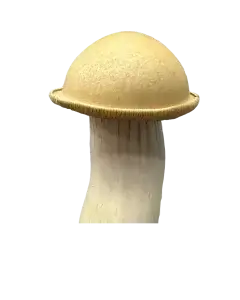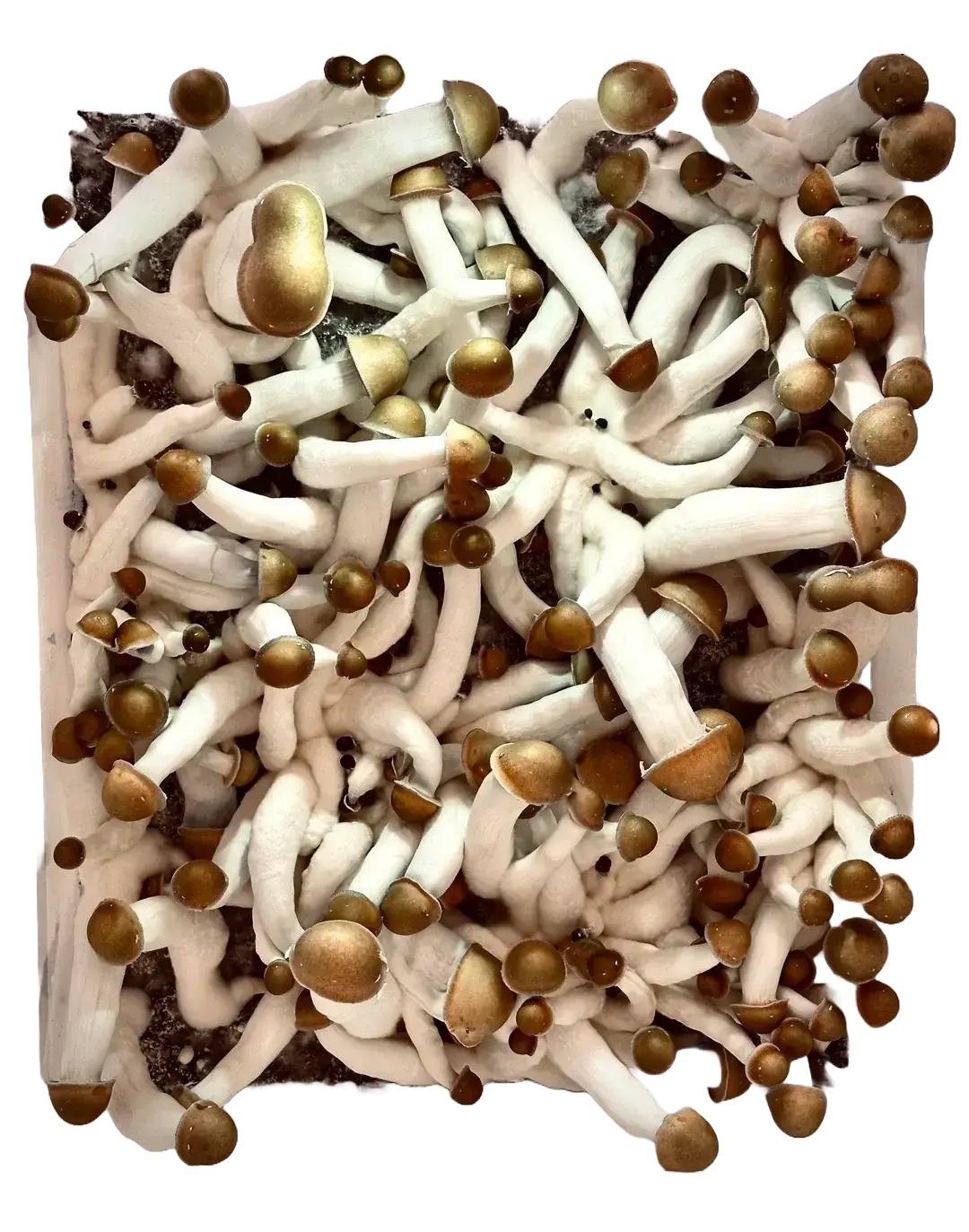DCM 95 (Psilocybe Cubensis): The Complete Microscopy Research Guide

DCM 95 represents one of the most fascinating and scientifically valuable Psilocybe cubensis varieties available for microscopic research today. This rare Canadian strain offers researchers unprecedented opportunities to study unique spore morphology, cellular architecture, and mycological characteristics that set it apart from common cubensis varieties.
Whether you’re conducting comparative taxonomy studies, advanced cellular analysis, or educational microscopy research, DCM 95 provides exceptional scientific value through its distinctive hexagonal clustering patterns and remarkable structural stability under laboratory conditions.
Scientific Classification and Taxonomy
DCM 95 belongs to the species Psilocybe cubensis (Earle) Singer, within the family Hymenogastraceae. This particular strain was first isolated and characterized by Canadian mycologists in 2018, representing a unique genetic lineage discovered in the pristine wilderness regions of Canada.
Taxonomic Classification
Kingdom: Fungi
Phylum: Basidiomycota
Class: Agaricomycetes
Order: Agaricales
Family: Hymenogastraceae
Genus: Psilocybe
Species: P. cubensis
Strain: DCM 95
Why DCM 95 Excels in Research Applications
Advanced researchers consistently choose DCM 95 over standard Psilocybe cubensis varieties due to its exceptional microscopic properties and research reliability. The strain’s unique characteristics make it ideal for both educational and professional scientific applications.
Superior Spore Characteristics
DCM 95 spores demonstrate remarkable consistency in cellular density and structural integrity, making them ideal for extended microscopy sessions. The hexagonal clustering phenomenon observed in this strain provides researchers with unique morphological features rarely documented in other cubensis varieties.
Under high magnification (1000x oil immersion), DCM 95 spores reveal complex multi-layered cell wall architecture with distinctive metallic purple-brown pigmentation that enhances contrast during detailed cellular analysis.
Ready to begin your DCM 95 research?
Explore our laboratory-grade spore collection at Atlas Spores Shop
Comparative Analysis: DCM 95 vs. Common Strains
When compared to popular research strains like Golden Teacher or B+ varieties, DCM 95 offers several distinct advantages for serious mycological research:
Morphological Distinctions
Spore Size Consistency: DCM 95 maintains uniform spore dimensions (11-14 μm × 7-9 μm) with minimal variation, crucial for quantitative research.
Unique Clustering Patterns: The hexagonal arrangement of spore deposits provides distinctive identification markers not found in standard cubensis strains.
Enhanced Pigmentation: Deep metallic coloration offers superior contrast for photomicroscopy and documentation purposes.
Advanced Microscopy Protocols for DCM 95
Proper specimen preparation and observation techniques are crucial for maximizing the research value of DCM 95 spores. The following protocols have been developed specifically for this strain’s unique characteristics.
Essential Equipment Checklist
Primary Equipment:
- Compound microscope with 400x-1000x magnification capability
- Oil immersion objective lens (100x) for detailed cellular analysis
- High-quality microscope slides and coverslips
- Precision pipettes or droppers for specimen handling
Sterilization Materials:
- 70% isopropyl alcohol for equipment sanitization
- Sterile latex or nitrile gloves
- Face mask for contamination prevention
- Alcohol wipes for surface cleaning
Step-by-Step Preparation Protocol
Slide Preparation Technique
- Sanitization: Clean microscope slide thoroughly with 70% isopropyl alcohol and allow to air dry completely.
- Spore Suspension: Shake DCM 95 spore syringe vigorously for 30 seconds to ensure even distribution.
- Sample Application: Place a single small drop (approximately 10 μL) of spore solution in the center of the slide.
- Coverslip Placement: Apply coverslip at a 45-degree angle to minimize air bubble formation.
- Settlement Period: Allow 3-5 minutes for spores to settle before beginning observation.
Advanced Staining Protocol
For enhanced cellular detail visualization, implement this specialized staining technique:
- Add one drop of lactophenol cotton blue to the spore sample before coverslip application
- Mix gently using a sterile toothpick or needle
- Apply coverslip and allow 5-7 minutes for stain uptake
- Begin observation at 400x magnification, progressing to 1000x for detailed analysis
Microscopic Observation Guidelines
DCM 95’s unique characteristics require specific observation protocols to fully appreciate its scientific value. Follow this systematic approach for comprehensive analysis.
Magnification Progression Protocol
100x Objective: Initial survey for spore distribution patterns and general morphology assessment.
400x Objective: Detailed examination of hexagonal clustering formations and individual spore characteristics.
1000x Oil Immersion: High-resolution analysis of cell wall architecture, internal structures, and pigmentation patterns.
Key Morphological Features to Document
- Hexagonal Clustering: Unique geometric arrangement pattern exclusive to DCM 95
- Metallic Pigmentation: Deep purple-brown coloration with characteristic metallic sheen
- Cell Wall Structure: Multi-layered architecture visible under high magnification
- Spore Dimensions: Consistent ellipsoid shape measuring 11-14 μm × 7-9 μm
- Surface Texture: Smooth perispore with subtle ornamentation patterns
Storage and Preservation Protocols
Proper storage is essential for maintaining spore viability and research quality. DCM 95 spores require specific environmental conditions to preserve their unique characteristics.
Optimal Storage Conditions
Temperature: Maintain consistent refrigeration at 35-42°F (2-6°C) immediately upon receipt. Avoid temperature fluctuations that can damage cellular integrity.
Light Protection: Store in complete darkness or amber-colored containers to prevent photodegradation of pigmentation compounds.
Humidity Control: Keep in sealed, sterile packaging to prevent moisture contamination while maintaining proper hydration levels.
Longevity: Under optimal conditions, DCM 95 spores maintain research quality for 6-12 months, with gradual quality degradation thereafter.
Troubleshooting Common Research Challenges
Visibility Enhancement Techniques
Poor Contrast Issues: If spore definition appears unclear, extend settlement time to 5-7 minutes and ensure proper illumination adjustment. Consider implementing phase contrast microscopy for enhanced detail visibility.
Clustering Overlap: Dilute spore solution with sterile distilled water (1:2 ratio) to reduce density and improve individual spore observation.
Contamination Prevention Strategies
Environmental Control: Conduct all microscopy work in a clean, low-airflow environment. Use laminar flow hood if available for critical research applications.
Equipment Sterilization: Sanitize all tools with 70% isopropyl alcohol before each use. Replace alcohol solution weekly to maintain effectiveness.
Sample Integrity: Work quickly but carefully during slide preparation to minimize exposure time and potential contamination.
Begin Your DCM 95 Research Project
Experience the exceptional research value of DCM 95 with laboratory-grade spore syringes from Atlas Spores. Each syringe contains millions of viable spores prepared under strict sterile conditions.
Research Applications and Scientific Value
DCM 95’s unique characteristics make it valuable for various research applications beyond basic microscopy. Its distinctive features support advanced mycological studies and comparative research projects.
Comparative Taxonomy Studies
DCM 95 serves as an excellent reference strain for comparative analysis with other Psilocybe species and varieties. Its consistent morphological features provide reliable baseline data for taxonomic classification studies.
Educational Applications
The strain’s predictable characteristics and visual distinctiveness make DCM 95 ideal for educational mycology programs. Students can easily identify key morphological features while learning proper microscopy techniques.
Time-Lapse Documentation
DCM 95’s stability during extended observation periods makes it perfect for time-lapse microscopy projects documenting spore behavior and environmental responses.
Frequently Asked Questions
What makes DCM 95 scientifically valuable?
DCM 95 offers unique hexagonal clustering patterns, consistent cellular architecture, and exceptional stability under laboratory conditions. These characteristics provide researchers with reliable, reproducible specimens for advanced microscopic analysis.
What magnification is optimal for DCM 95 research?
Begin observation at 400x magnification to identify clustering patterns and general morphology. Progress to 1000x oil immersion for detailed cellular analysis and documentation of unique structural features.
How long do DCM 95 spores remain viable for research?
Under proper refrigerated storage conditions (35-42°F), DCM 95 spores maintain optimal research quality for 6-12 months. Gradual quality degradation occurs beyond this timeframe, though specimens may remain suitable for basic observation.
Can DCM 95 be used for comparative studies?
Absolutely. DCM 95’s consistent characteristics make it an excellent reference strain for comparative taxonomy studies, educational applications, and morphological analysis projects comparing different Psilocybe varieties.
Explore Related Research Strains
Expand your mycological research with these complementary Psilocybe varieties, each offering unique characteristics for comparative studies:
Recommended Research Collection
Golden Teacher – Classic cubensis morphology ideal for baseline comparative studies and educational applications.
Semperviva – Resilient Psilocybe subtropicalis variant offering unique species comparison opportunities.
Jack Frost – Distinctive leucistic variety providing exceptional contrast for photomicroscopy documentation.
Additional Research Resources
- Advanced Microscopy Techniques for Mycological Research
- Comparative Morphology in Psilocybe Species
- Spore Preservation and Long-term Storage Methods
- Digital Documentation Strategies for Scientific Research
- Quality Control Protocols for Microscopy Specimens
Legal Research Disclaimer
Important: All spore syringes and research materials sold by Atlas Spores are intended exclusively for microscopy research, taxonomy studies, and educational purposes. The cultivation of psilocybin-containing mushrooms is prohibited in many jurisdictions.
Researchers must comply with all applicable local, state, and federal regulations. Atlas Spores assumes no responsibility for misuse of research materials or violations of applicable laws.



